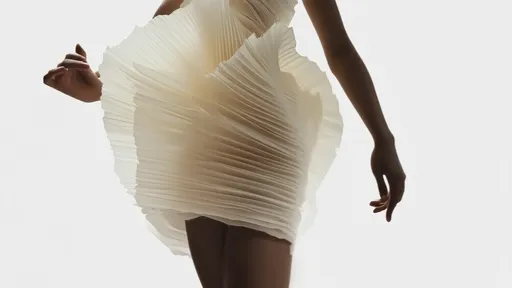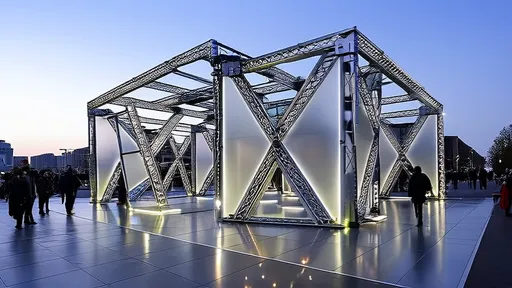The intersection of fashion and technology has birthed a fascinating new frontier: wearable tech art. This emerging field blends the aesthetics of clothing design with the interactive possibilities of modern technology, creating garments that are not just worn but experienced. From LED-embedded dresses that change color with movement to jackets that respond to environmental stimuli, wearable tech art is redefining what it means to dress.
The fusion of fashion and interactivity is at the heart of this movement. Designers are no longer limited to static fabrics and traditional silhouettes. Instead, they incorporate sensors, microcontrollers, and even artificial intelligence into their creations. These garments can react to touch, sound, or biometric data, transforming the wearer into a living canvas. The result is a dynamic form of self-expression that evolves in real-time, blurring the line between art and utility.
One of the most compelling aspects of wearable tech art is its ability to challenge conventional notions of clothing. While traditional fashion serves practical and aesthetic purposes, these interactive pieces often prioritize conceptual depth. They question how we engage with our attire and how our attire, in turn, engages with the world around us. A dress that lights up in response to pollution levels, for instance, becomes both a statement and a sensor, merging activism with design.
The technical craftsmanship behind these pieces is equally impressive. Unlike mass-produced fashion, wearable tech art demands collaboration across disciplines. Fashion designers work alongside engineers, programmers, and material scientists to bring their visions to life. The process involves prototyping with flexible circuits, experimenting with conductive threads, and ensuring that technology integrates seamlessly into fabric without compromising comfort or movement. It’s a delicate balance of form and function.
Beyond the studio, wearable tech art is making waves in performance and entertainment. Dancers clad in motion-sensitive costumes can trigger visual effects with their movements, adding a layer of interactivity to live shows. Musicians have adopted tech-infused outfits that generate sound or light in sync with their performances. These applications highlight how the medium transcends fashion, becoming a tool for storytelling and audience engagement.
Yet, for all its innovation, wearable tech art faces challenges. Durability remains a concern—how does one wash a dress lined with circuitry? There are also questions about accessibility, as the cost of materials and expertise often places these pieces in the realm of high art or luxury. Still, as technology becomes more affordable and adaptable, the potential for broader adoption grows.
What’s next for this burgeoning field? Some designers are exploring biodegradable electronics, aiming to reduce waste. Others are experimenting with augmented reality, where clothing interacts with digital overlays visible through smartphones or smart glasses. The possibilities are as limitless as the creativity driving them. Wearable tech art isn’t just the future of fashion; it’s a glimpse into how we might merge our physical and digital identities in years to come.

By /Jul 9, 2025

By /Jul 9, 2025

By /Jul 9, 2025

By /Jul 9, 2025

By /Jul 9, 2025

By /Jul 9, 2025

By /Jul 9, 2025

By /Jul 9, 2025

By /Jul 9, 2025

By /Jul 9, 2025

By /Jul 9, 2025

By /Jul 9, 2025

By /Jul 9, 2025

By /Jul 9, 2025

By /Jul 9, 2025

By /Jul 9, 2025

By /Jul 9, 2025

By /Jul 9, 2025